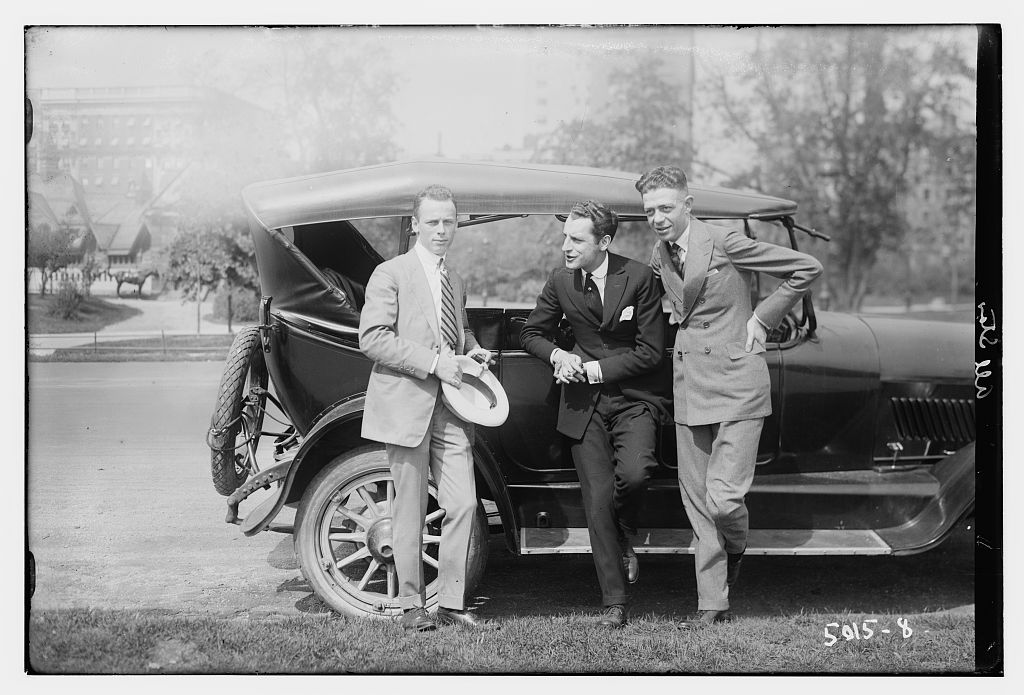Welcome back to “Vintage Musician of the Week,” our weekly feature where we rediscover the musicians whose melodies shaped the soundtracks of their eras. From ragtime rhythms to early jazz syncopations, each week brings us closer to the heart of musical history, highlighting those who laid the groundwork for modern tunes. Join us as we celebrate the All Star Trio, an ensemble that made waves in the 1910s with their lively arrangements and impeccable artistry.

The All Star Trio stood at the intersection of ragtime and early jazz, captivating audiences with their unique blend of dance music and novelty tunes. This talented ensemble, consisting of George Hamilton Green on saxophone and clarinet, Victor Arden on piano and violin, and Frank Banta on percussion, brought forth a delightful mix of technical mastery and rhythmic brilliance. They pioneered a distinctive style that became emblematic of a new musical age, skillfully adapting the ragtime roots of the late 19th century into the burgeoning jazz of the early 20th.
The group was formed in the early 1910s, bringing together three outstanding musicians who sought to infuse their own blend of ragtime, jazz, and novelty tunes into popular music. Their formation was emblematic of a period where small instrumental groups were gaining popularity, offering tightly arranged, highly rhythmic melodies that perfectly matched the dancing craze sweeping the nation. By combining each member’s unique talents, they created a sound that was both innovative and irresistible.
F. Wheeler Wadsworth was the Trio’s versatile reedman, skilled on both the saxophone and clarinet. His playful melodies and lively solos brought a distinctive charm to their arrangements.
Frank Banta and Victor Arden served as the Trio’s pianist, providing a harmonic backbone to the group’s songs while also contributing memorable melodic lines. Arden’s deft touch on the piano gave the band its bright, energetic rhythm, adding depth and complexity to their compositions. His intuitive sense of timing ensured that each track was grounded in a solid yet fluid groove, making him the heartbeat of the ensemble.
George Hamilton Green, a masterful musician, is remembered as one of the most celebrated xylophonists of his time. Though he initially gained prominence as a reed player with the All Star Trio, Green’s exceptional talent truly shone on the xylophone, an instrument he transformed into a virtuosic solo voice. His deft technique, unparalleled speed, and creative use of syncopation brought new life to ragtime and novelty tunes, captivating audiences with his lively and intricate performances. His influence extended beyond the stage as he composed and arranged pieces that pushed the technical boundaries of xylophone music, helping elevate it to a respected and standalone instrument. Green’s pioneering work left an indelible mark on percussion history and continues to inspire percussionists and enthusiasts today.
Together, they cultivated a musical style that deftly blended the rhythmic drive of ragtime with the burgeoning energy of early jazz, creating an infectious and danceable sound that quickly gained popularity. Their arrangements featured tight interplay between instruments, with saxophone and clarinet melodies weaving through lively xylophone rhythms and playful piano flourishes. Tracks like “Oh! By Jingo!” and “The Vamp” showcased their knack for catchy tunes that could make even the stiffest audience members tap their toes. By focusing on syncopated rhythms and brisk tempos, they perfectly captured the optimistic spirit of the 1910s, helping to usher in a new era of popular music.
Their legacy can be felt in the small jazz and dance bands that became popular throughout the 1920s and 1930s. The All Star Trio set a high standard for instrumental prowess and innovative arrangements, inspiring other musicians to experiment with similar combinations of instruments and styles. Their recordings helped bridge the gap between the structured syncopation of ragtime and the improvisational freedom of jazz, playing a pivotal role in the evolution of American music. Though their fame faded as the Jazz Age progressed, their joyful, well-crafted melodies remain a testament to their artistry and continue to enchant listeners today.
The All Star Trio played a vital role in shaping the cultural landscape of the early 20th century, providing the soundtrack to a society in the midst of significant transformation. Their music captured the spirit of a rapidly modernizing world, where new technologies like the phonograph and radio were bringing music into homes across the country. Their upbeat rhythms and playful melodies provided the perfect accompaniment to the era’s dance craze, drawing audiences onto the dance floor with enthusiasm and creativity. The Trio’s distinctive sound became synonymous with the optimism of the 1910s, resonating with a public eager for lively entertainment.
Beyond their immediate popularity, the All Star Trio’s influence extended into the broader musical evolution of the era. They helped solidify the concept of small instrumental ensembles that emphasized rhythmic drive and instrumental interplay, a format that would later characterize dance bands and early jazz combos. Their innovative blend of genres, particularly the fusion of ragtime and jazz, opened the door for subsequent musicians to explore new sounds and arrangements. In doing so, the Trio not only captured the zeitgeist of their time but also laid the foundation for the musical experimentation that would define the Jazz Age and beyond.
In reflecting on the All Star Trio’s musical legacy, we find a group that deftly captured the spirit of an era in transition, bridging the structured syncopation of ragtime and the rhythmic freedom of jazz. Their infectious melodies and rhythmic innovation defined the optimistic spirit of the 1910s, creating a soundtrack for a society on the brink of a musical revolution. Though their star has dimmed with time, their influence remains woven into the fabric of early American popular music, and their lively arrangements continue to evoke the joy and excitement of a bygone age.
All the Quakers are Shoulder Shakers
Old Man Jazz
The Vamp
